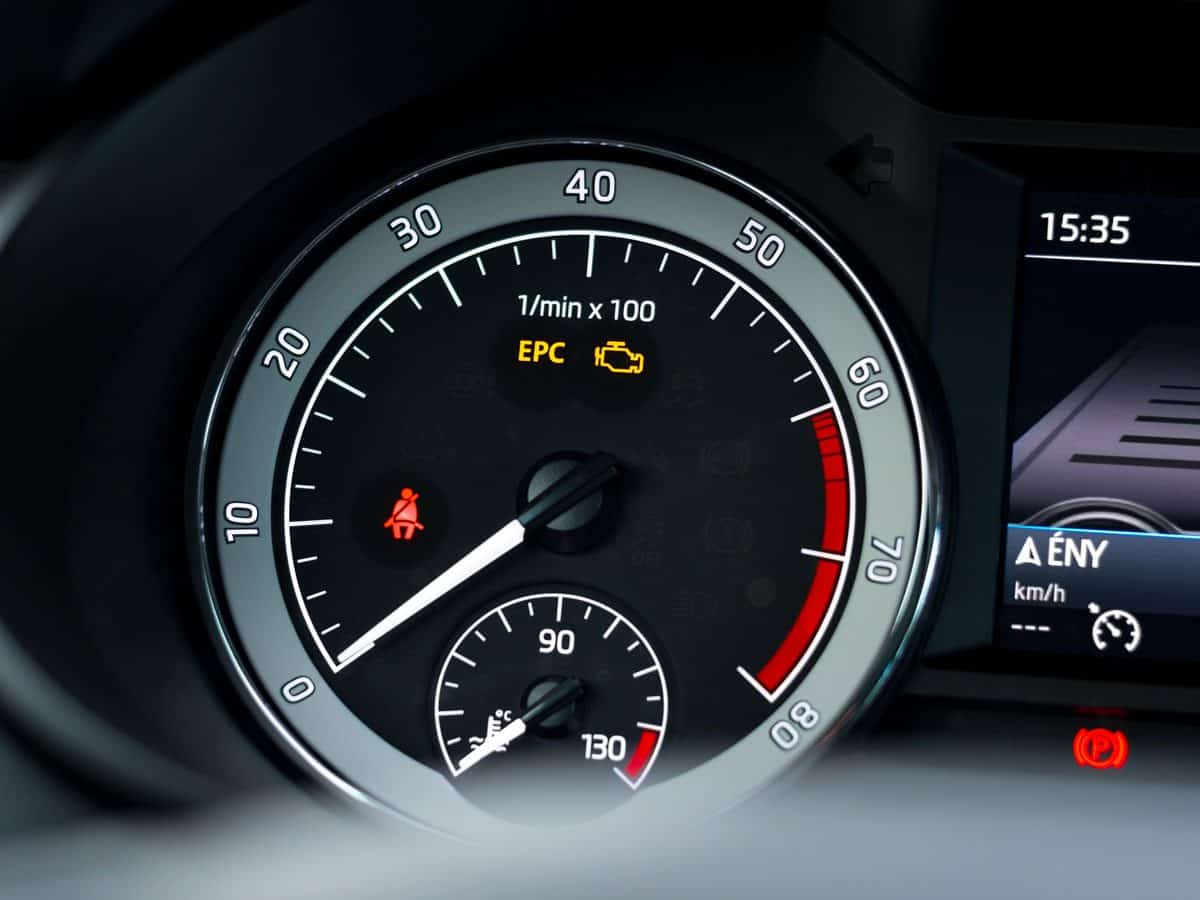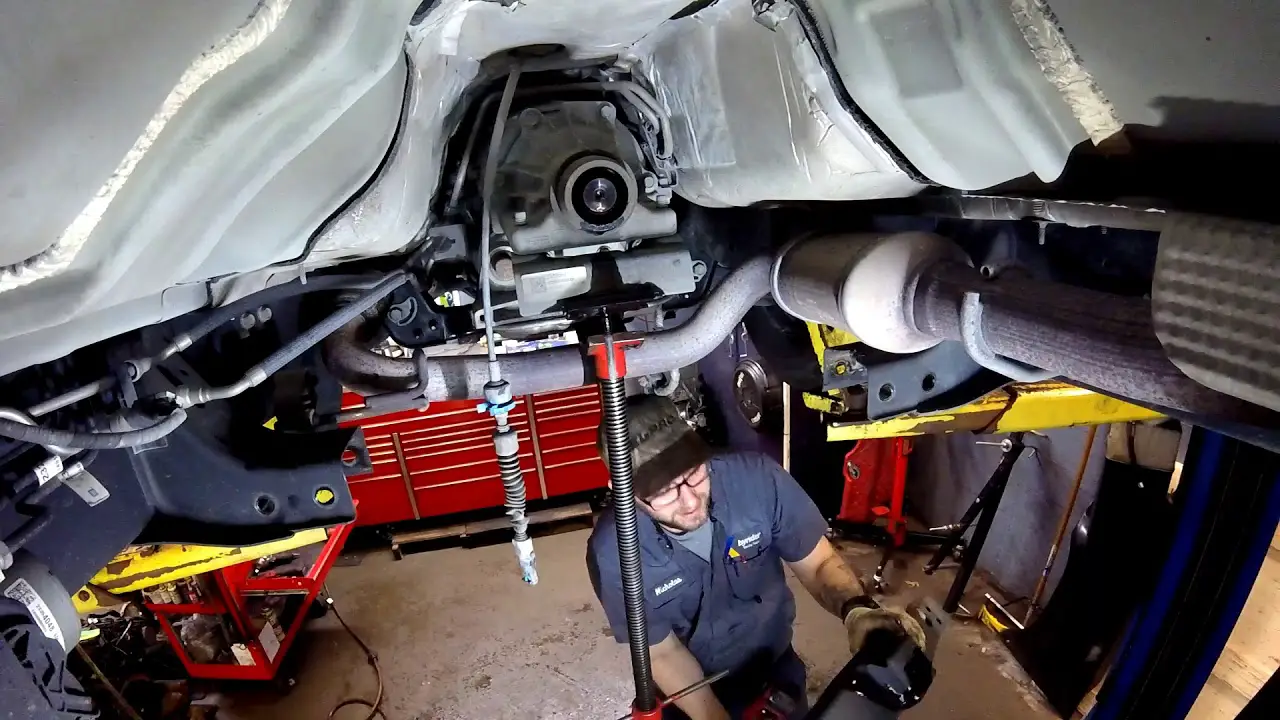If you’ve ever noticed the EPC light blinking on your Audi Q5’s dashboard, you’re not alone.
The EPC (Electronic Power Control) light can be a cause for concern, but fret not – resolving this issue is often simpler than it seems.
In this step-by-step guide, we’ll walk you through the process of fixing the EPC light on your Audi Q5, using easy-to-understand instructions.
Whether you’re a seasoned car enthusiast or just a regular driver, our guide aims to demystify the process and empower you to address the issue without unnecessary stress.
From checking basic components to troubleshooting common issues, we’ve got you covered.
Follow along as we break down the steps to ensure that your Audi Q5 is back on the road, EPC light-free, in no time.
What is the EPC Light and Why Did It Come On?
The Electronic Power Control (EPC) light on your Audi Q5 is a dashboard warning indicator that demands attention. This light, shaped like an engine, serves as a crucial communication tool between your vehicle’s various components. It signals issues related to the powertrain or engine management system that require prompt investigation.
The EPC light specifically alerts you to problems within the Electronic Power Control system, which oversees the throttle body’s operation. When this light illuminates, it’s a red flag indicating potential issues affecting your vehicle’s performance. While it doesn’t pinpoint the exact problem, it serves as an early warning, prompting you to delve deeper into the engine’s health.
Several factors can trigger the EPC light in an Audi Q5. Common culprits include malfunctioning sensors, throttle body issues, electronic control unit glitches, or problems with the engine management system. Understanding these common triggers is essential for a driver seeking to diagnose and address the root cause of the EPC light activation promptly.
How to Perform an Initial Check
Before delving into complex problem-solving, conducting a preliminary inspection is crucial to identify apparent issues triggering the EPC light on your Audi Q5. Here’s a step-by-step guide to performing an initial check:
-
Visual Inspection
Begin with a visual scan of the engine compartment. Look for any loose components, disconnected hoses, or visibly damaged parts. Addressing these visual cues can sometimes swiftly resolve the EPC light issue.
-
Check for Loose Connections
Examine all electrical connections, including those related to the sensors and wiring. Ensure that connectors are securely in place and not subject to corrosion or wear. Tightening any loose connections can often rectify the problem.
-
Inspect Visible Damage
Thoroughly examine hoses, wires, and components for signs of wear, tear, or damage. Pay close attention to the throttle body and associated wiring. Identifying and addressing visible damage is a crucial step in the initial check.
-
Verify Fluid Levels
Ensure that essential fluids, such as engine oil, coolant, and brake fluid, are at appropriate levels. Inadequate fluid levels can contribute to EPC light activation. Top up or replace fluids as needed.
Step-by-Step Guide to Resolving EPC Light On Audi Q5
The EPC light on your Audi Q5 can be a cause for concern, but resolving it doesn’t always require a trip to the mechanic. This step-by-step guide empowers you to troubleshoot and resolve the issue on your own. Let’s break down the process into three key subtopics:
1: Check Engine Oil Level
Proper engine oil levels are paramount for the optimal performance of your Audi Q5. Inadequate oil levels can lead to increased friction, overheating, and potential damage to vital engine components. Follow these steps to check and add oil if needed:
Importance of Proper Engine Oil Levels
Engine oil serves as the lifeblood of your vehicle’s engine, providing lubrication to vital components and ensuring smooth operation. When the oil level is too low, the engine is at risk of increased wear and reduced efficiency, leading to the activation of the EPC light. Regularly monitoring and maintaining proper oil levels is a fundamental aspect of vehicle care.
How to Check and Add Oil
- Locate the Oil Dipstick: Open the vehicle’s hood and find the oil dipstick, typically with a brightly colored handle.
- Pull Out the Dipstick: Remove the dipstick and wipe it clean with a cloth.
- Reinsert and Withdraw the Dipstick: Put the dipstick back in its place and then pull it out again. Check the oil level against the markings on the dipstick.
- Add Oil if Necessary: If the oil level is below the recommended level, add the appropriate type and amount of oil. Refer to your vehicle’s manual for specifications.
2: Inspect Air Filter
The air filter plays a crucial role in your engine’s performance by ensuring that only clean air enters the combustion chamber. A clogged or dirty air filter can restrict airflow, leading to decreased fuel efficiency and increased emissions. Here’s how to examine and replace the air filter:
The Role of the Air Filter in Engine Performance
The air filter acts as a barrier, preventing dust, debris, and contaminants from entering the engine. It ensures that the air entering the combustion chamber is clean, promoting efficient fuel combustion. A clogged air filter can impede airflow, affecting the air-fuel mixture and triggering the EPC light.
Simple Steps to Examine and Replace the Air Filter
- Locate the Air Filter Housing: Refer to your vehicle’s manual to find the air filter housing, usually located in the engine compartment.
- Inspect the Air Filter: Remove the air filter and inspect it for dirt, debris, or visible damage. If it’s dirty or clogged, replacement is recommended.
- Replace the Air Filter: Install a new air filter of the appropriate size and type. Ensure it fits securely in the housing.
- Secure the Housing: Close and secure the air filter housing, ensuring proper sealing.
3: Examine Throttle Body
The throttle body is a critical component of the engine’s air intake system, regulating the amount of air that enters the engine. Issues with the throttle body can disrupt this delicate balance, triggering the EPC light. Understand the throttle body’s impact and learn how to clean or troubleshoot issues:
Understanding the Throttle Body and its Impact on the EPC Light
The throttle body controls the airflow into the engine in response to the driver’s acceleration or deceleration. It houses a throttle plate that opens and closes to adjust the air supply. If the throttle body is dirty or malfunctions, it can disrupt the air-fuel mixture, leading to poor engine performance and the activation of the EPC light.
How to Clean or Troubleshoot Issues with the Throttle Body
- Locate the Throttle Body: Refer to your vehicle’s manual to find the throttle body’s location in the engine compartment.
- Disconnect the Air Intake Tube: Carefully disconnect the air intake tube to access the throttle body.
- Inspect for Buildup: Check the throttle body for any carbon buildup or dirt. A dirty throttle body can be cleaned using a specialized throttle body cleaner.
- Clean the Throttle Body: Use a clean cloth or throttle body cleaner to gently remove any deposits on the throttle plate and surrounding areas.
- Check for Mechanical Issues: Ensure that the throttle plate moves freely and that there are no mechanical issues. Replace the throttle body if necessary.
Common Troubleshooting Tips

Navigating the complexities of electronic systems in your Audi Q5 is crucial when addressing the EPC light. Here are some common troubleshooting tips to help you tackle electronic issues related to sensors and wiring, as well as resetting the EPC light after resolving the problem:
Addressing Electronic Issues Related to Sensors and Wiring
- Scan for Fault Codes
Invest in an OBD-II (On-Board Diagnostics) scanner to retrieve fault codes from the vehicle’s computer. These codes can offer insights into specific sensor or wiring issues triggering the EPC light.
- Inspect Sensor Connections
Check the connections of critical sensors, such as the throttle position sensor and oxygen sensor. Ensure they are securely connected, free from corrosion, and show no signs of damage.
- Wiring Inspection
Examine the wiring harnesses for any visible wear, fraying, or damage. Faulty wiring can disrupt communication between sensors and the engine control unit, leading to EPC light activation.
- Clean Electrical Contacts
If applicable, clean electrical contacts using an electronic contact cleaner. This can help improve conductivity and eliminate issues arising from poor electrical connections.
- Replace Faulty Sensors
If fault codes or visual inspections indicate sensor malfunctions, consider replacing faulty sensors. Ensure replacements are compatible with your Audi Q5 model.
Tips for Resetting the EPC Light After Resolving the Problem
-
Use an OBD-II Scanner
Once you’ve addressed the underlying issue, use an OBD-II scanner to clear the EPC light code from the vehicle’s computer. Follow the scanner’s instructions for code clearing.
-
Disconnect the Battery
If you don’t have access to an OBD-II scanner, another method is to disconnect the vehicle’s battery. This effectively resets the vehicle’s computer. Before attempting this, ensure you have any necessary codes for your car’s audio system, as disconnecting the battery may require re-entering these codes.
-
Follow Manufacturer Guidelines
Consult your Audi Q5 owner’s manual for specific instructions on resetting the EPC light. Manufacturers may provide model-specific procedures that are essential to follow for a successful reset.
-
Drive the Vehicle
In some cases, simply driving the vehicle for a certain distance may trigger the system to recognize that the issue has been resolved. This can lead to the automatic extinguishing of the EPC light.
When to Seek Professional Help
While tackling basic troubleshooting can resolve many issues related to the EPC light on your Audi Q5, there are instances when seeking professional help is essential. Recognizing the signs that your vehicle requires the expertise of a certified mechanic ensures timely and accurate resolution. Here are indicators of when to seek professional assistance:
-
Persistent EPC Light Activation
If the EPC light continues to illuminate despite your efforts to address the identified issues, it’s a clear signal that there may be underlying problems requiring specialized diagnostic tools and professional expertise.
-
Complex Electronic Faults
Issues related to the electronic control unit (ECU), advanced sensor malfunctions, or intricate wiring problems may be beyond the scope of basic troubleshooting. A qualified mechanic can use diagnostic equipment to pinpoint and resolve complex electronic faults.
-
Unfamiliar Sounds or Odors
Unusual sounds, smells, or vibrations accompanying the EPC light could indicate mechanical or engine-related issues that demand professional attention. Ignoring these signs may lead to more significant problems and potential safety hazards.
-
Lack of Technical Knowledge
If you lack the technical knowledge or experience required to address specific components or systems, seeking professional help is prudent. Complex engine and electronic systems demand precise expertise to avoid causing further damage.
-
Warranty or Recall Concerns
If your Audi Q5 is under warranty, attempting DIY repairs may void the warranty. Additionally, some vehicle issues may be covered by manufacturer recalls. A professional mechanic can ensure that necessary repairs are performed without jeopardizing warranty coverage.
-
Specialized Tools and Equipment
Certain repairs, such as those involving specialized tools or diagnostic equipment, are best left to professionals. Mechanics have access to resources that enable accurate diagnosis and efficient resolution of complex issues.
-
Safety Concerns
If the EPC light is accompanied by safety-related concerns, such as brake issues or erratic driving behavior, it’s imperative to consult a professional immediately. Safety should always be a top priority.
-
Fluid Leaks or Overheating
Fluid leaks, especially those involving coolant or oil, and instances of overheating, require prompt attention. These issues can lead to severe engine damage if not addressed promptly by a professional.
FAQs – How To Fix EPC Light On Audi q5
What causes the EPC light on Audi Q5?
The EPC light on Audi Q5 can be triggered by various issues, including problems with the throttle body, malfunctioning sensors, electronic control unit (ECU) glitches, issues with the engine management system, or other mechanical and electrical issues.
What is the most common reason for the EPC light?
The most common reason for the EPC light is often related to issues with the throttle body. The throttle body regulates the airflow into the engine, and any malfunction or buildup can disrupt this process, triggering the EPC light.
How do I fix my Audi EPC fault?
Start with a systematic approach. Check engine oil levels, inspect the air filter, and examine the throttle body. If issues persist, consider consulting a professional mechanic for a comprehensive diagnosis and resolution.
Can the EPC issue be fixed?
Yes, the EPC issue can often be fixed. It may involve addressing specific components, such as sensors, wiring, or the throttle body. Following a structured troubleshooting process can help identify and resolve the problem.
Can spark plugs cause the EPC light?
While spark plugs are not a direct cause of the EPC light, they are part of the overall engine system. If faulty spark plugs lead to misfires or other engine issues, it can contribute to the activation of the EPC light.
Why did my EPC light come on and go off?
The EPC light may come on temporarily due to a momentary glitch or sensor reading. If it goes off, it could mean that the issue was resolved, or it may indicate intermittent problems that need further investigation.
What is limp mode?
Limp mode is a safety feature that vehicles enter when a serious issue is detected. In limp mode, the vehicle operates at reduced power to prevent further damage. The EPC light often accompanies limp mode.
Why is my check engine light flashing?
A flashing check engine light indicates a severe issue that requires immediate attention. It may be related to misfires, which can contribute to EPC light activation.
What is the Volkswagen throttle system?
The Volkswagen throttle system regulates the airflow into the engine. It includes components like the throttle body and sensors, crucial for maintaining optimal engine performance.
What is the ESP warning light on my Audi Q5?
The ESP (Electronic Stability Program) warning light on your Audi Q5 indicates issues with the vehicle’s stability control system. It is a separate system from the EPC but may share common sensors and components.
What is the engine management light on the Audi Q5?
The engine management light on the Audi Q5 is a general indicator of issues within the engine system. It may illuminate for various reasons, including sensor malfunctions, fuel system problems, or exhaust issues.
What is the malfunctioning indicator lamp on the Audi Q5?
The malfunction indicator lamp (MIL) is another term for the check engine light. It illuminates to alert the driver to potential issues within the vehicle’s engine or emission control system, triggering the need for diagnostics and repairs.
Conclusion – How To Fix EPC Light On Audi Q5
Knowing and addressing the EPC light in your Audi Q5 doesn’t have to be a daunting task.
By following the straightforward steps outlined in this guide, you can confidently troubleshoot common issues and, in many cases, resolve them on your own.
Regular maintenance, such as checking oil levels and inspecting the air filter, goes a long way in preventing EPC light activations.
Remember, if challenges persist or you’re unsure, seeking professional assistance ensures the longevity and reliable performance of your vehicle.
Drive with confidence, armed with the knowledge to keep your Audi Q5 running smoothly on the open road.




